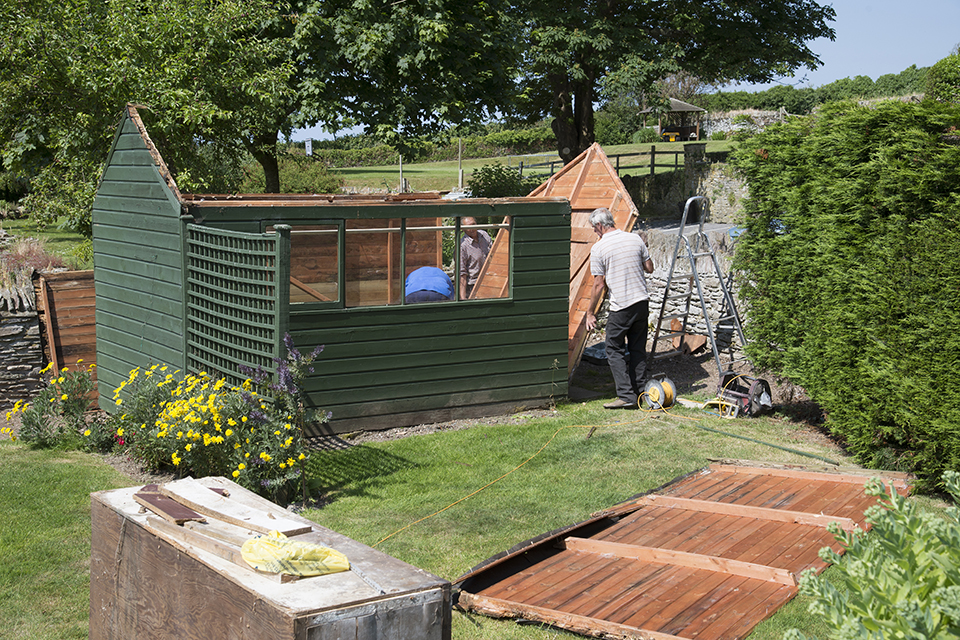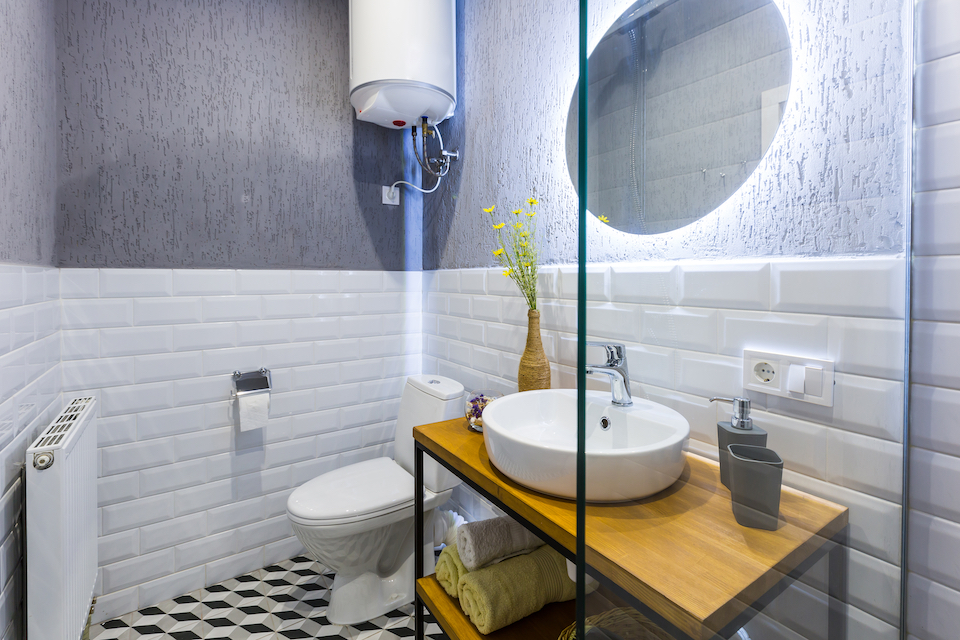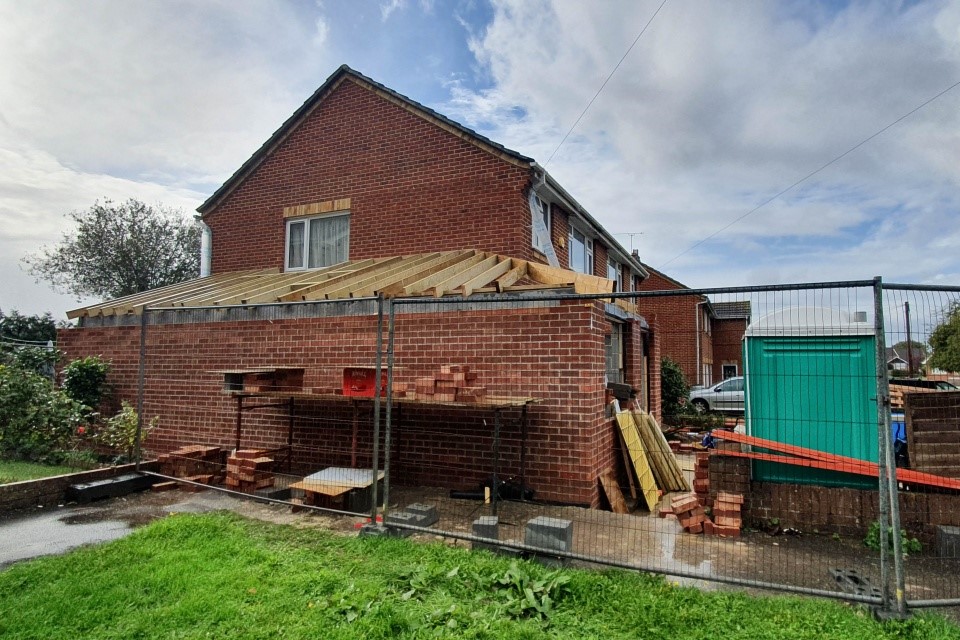How Much Does Shed Removal Cost?
Are you considering removing an old garden shed?
If so, you're probably wondering about the prices involved with this type of job.
In this article, we will go over everything you need to know about removing a garden shed, including the average costs of removing a garden shed, the supply cost of removing a shed, the labour costs involved with this type of work, and any additional costs that may come up with a garden shed demolition.
We will also go over the timescales you can expect with this type of work and the various types of shed removal.
Garden sheds are very common and can be a great asset to the garden as they're perfect for storing any garden items such as garden tools and lawnmowers.
Unfortunately, many people overlook their garden sheds and fail to maintain them, resulting in them quickly falling into disrepair. While it is possible to repair a garden shed, the only option is to completely remove and replace the shed as soon as the structural integrity is compromised.
If you leave your damaged garden shed for too long, it can become a breeding ground for mould, rot, and rust. If you have a very old shed, the roof may even be full of asbestos. This can be extremely dangerous and can cause significant health concerns if inhaled.
In some cases, you may simply want to remove a garden shed because you want to use the space for something else or simply increase the space in your garden. If you have other storage means, such as a garage or a lockbox, you may not have much use for your shed.
So, how much does it cost to remove a garden shed?
The total price you can expect to pay for a garden shed removal will depend on several factors, so it may be difficult to determine the exact cost.
Many different companies will also charge varying amounts for the same job. In general, the average cost to remove an old shed is around £150-£325.
If your old shed is filled with asbestos, this is going to be more expensive. You will have to hire a professional asbestos removal company to take care of this type of removal for you.
This is because it requires certain knowledge and skills to remove the asbestos safely. The average cost to remove an old shed with asbestos is around £300-£400.
Shed Removal Prices
The table below shows the various garden shed removal prices that you may need to budget for:
| Job Description | Average Cost |
|---|---|
| Shed dismantle and removal | £150-£325 |
| Shed roof removal and replacement | £80-£150 |
| Summerhouse removal | £500-£1000 |
| New shed purchase and installation | £600-£1500 |
| Asbestos shed removal | £300-£400 |
What are the Supply Costs for Shed Removal?
If you consider removing your garden shed yourself, you may be interested in the supply costs alone without the cost of labour.
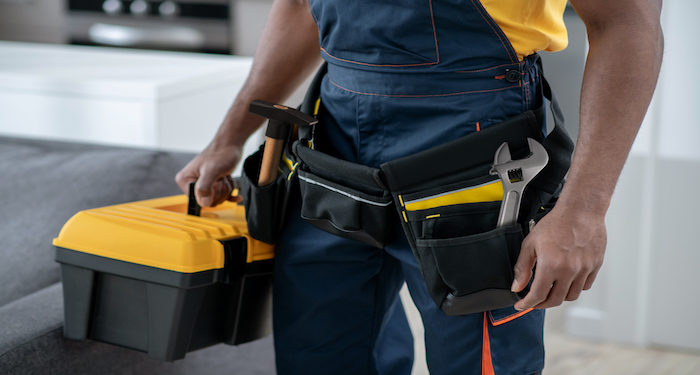
When it comes to removing a garden shed, you won't need to worry about any supply costs unless you are removing your old garden shed to replace it with a new one.
If you are removing your old shed and replacing it with a new one, you can expect to pay around £500-£1500 for a new garden shed.
The overall cost for a new garden shed will vary depending on the size of the shed and the materials that the shed is built with.
What are the Additional Costs of Removing a Shed?
When it comes to removing a garden shed, there are several additional jobs that you may want to have done around the same time.
In this section, we will take a look at some of the additional jobs that you may need to budget for with this type of work and the prices that you can expect to pay for these additional jobs.
Fence Installation
When you get a shed removed from your garden, you may want to install some additional things in your garden, such as a garden fence. Garden fencing can help to provide your garden with some additional privacy. New garden fencing can also help improve your garden's aesthetic appearance.
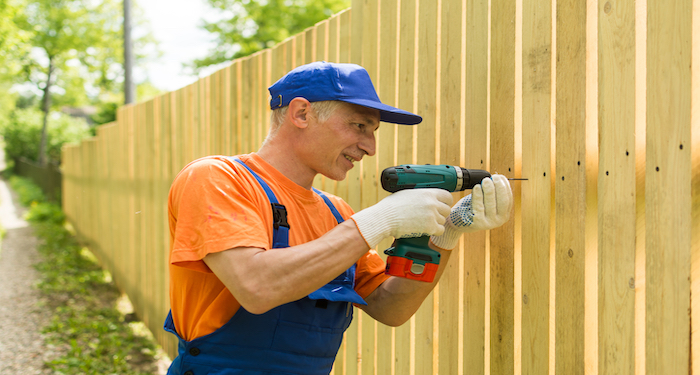
The average cost to install a fence in your garden is around £550-£1500. The overall cost of this job will depend on the size of the garden fence and the materials used.
Garden Wall Installation
Alternatively, you may wish to consider installing a garden wall in place of your old garden shed. A new garden wall can improve the appearance of your garden and can also provide you with some privacy.
The overall cost of building a garden wall will depend on the materials used to build it and the size of the wall. You can most commonly expect to pay around £450-£1200 to install a garden wall.
Gardening Work
When you have your garden shed removed, you may want to do some gardening work to improve the appearance of your outdoor space – especially in the area where the shed once was. Garden work can include trimming, landscaping, turfing, or general garden tidying.
Gardeners will usually charge an hourly rate or a daily rate. You can expect to pay a typical gardener around £100-£180 per day or £10-£30 per hour for work on your garden.
Garden Decking Installation
When you have removed a garden shed, there will be a lot of additional space left in the garden for you to use. You may wish to get some garden decking installed with this additional space.
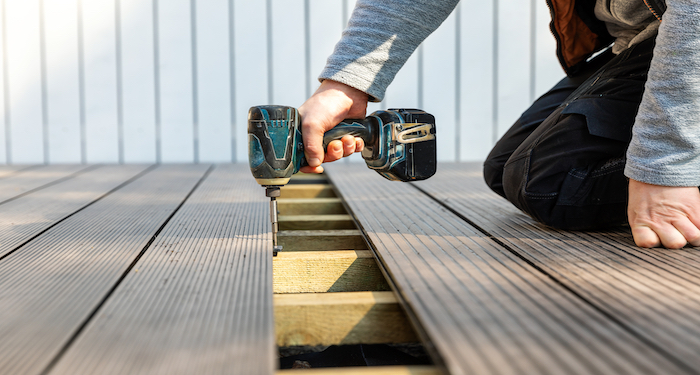
Garden decking comes in a variety of styles, and you will easily be able to find a style that goes well with your garden space. The average cost for a garden decking installation is around £1000-£5000, depending on the size of the area.
New Patio Installation
If you aren’t that interested in decking, you may be interested in installing a new patio as an alternative. Garden patios can come at various different styles and prices depending on the materials used and the size of the area where the patio will go.
On average, you can typically expect to pay around £800-£3500 for a new garden patio.
Garden Waste Removal
If you are demolishing your shed yourself, you may then have to pay for the waste removal. Also, if you are completing any additional work on your garden at the same time, then you may need garden waste removal services for that too.
If you need to hire a company to remove your garden waste for you, then you can expect to pay around £15-£300 depending on the amount of waste that needs to be removed.
Alternatively, you may want to hire a skip for the waste removal. This will usually cost around £70-£400, depending on the size of the skip and the duration of the hire.
Tradesmen Costs for Shed Removal
When it comes to a shed removal, most of the cost will be spent on labour, with some of the total cost going towards waste removal.
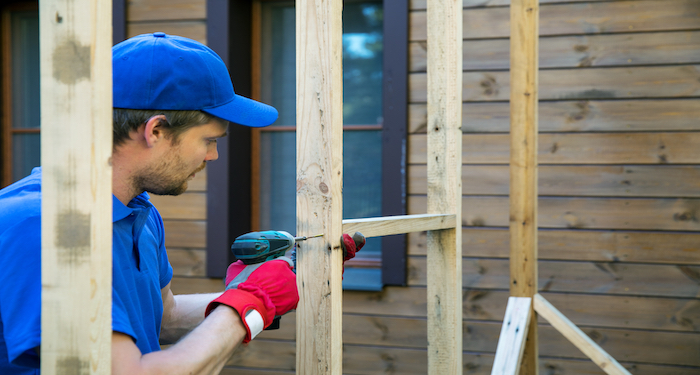
In this section, we will go over the shed removal costs that you can expect to pay for the labour part of this job.
Most shed removals companies will charge a set rate for removing your shed for you. The cost for labour will usually be around £120-£300.
Some contractors may choose to charge you an hourly rate for this type of work. If so, you can expect to pay around £15-£30 per hour for a contractor to remove your shed for you.
How Long Does It Take to Remove a Shed?
If you are planning on getting a shed removed from your garden, you may be curious about the timescales that you can expect with this type of work.
There are several things that can affect the time it takes to remove a garden shed. These things can include the type of shed, the materials that the shed is constructed out of, the condition of the shed, the size of the shed, and the ease of access.
You can expect a shed removal to take just 2-3 hours to complete most of the time. However, if the shed is filled with asbestos, this is a specialist job and will require a specialised type of removal.
Depending on the level of asbestos in the shed, this could add an additional few hours to the job.
Types of Shed Removal
There are several different types of sheds. If you are considering having a shed removed, you may need to tell your contractor the type of shed that you have so that they can provide you with an accurate quote.
In this section, we will go over the different types of sheds that you may have so that you can identify yours and get a quote for the right price.
Pent Shed
A pent shed has a single sloping roof. The roof's highest point is located on the same side as the door.
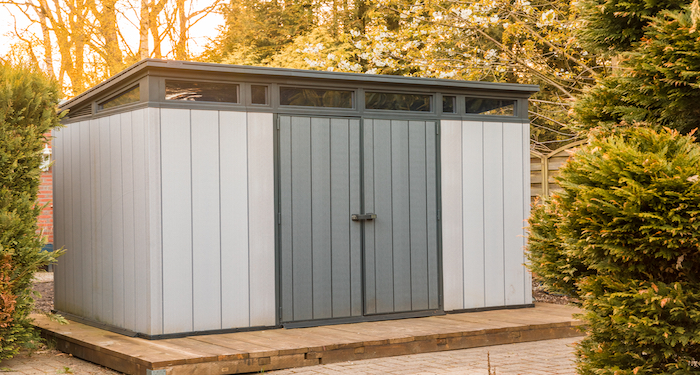
This is so that any falling rainwater doesn't collect on the roof and, instead, exits the roof at the rear of the shed. This is a popular type of shed and usually comes at quite a low price.
Reverse Pent Shed
A reverse pent shed follows the same type of design as a pent shed with a single sloping roof. However, the roof slope is reversed, so the highest point of the slope is at the rear end of the roof.
This means that water runs off the roof at the front of the shed, which can be beneficial if you plan on having your shed with the back up against a wall or a fence.
Apex Shed
An apex shed is one that features an apex roof. An apex roof features two sloping sides that meet in the middle along the entire length of the shed.
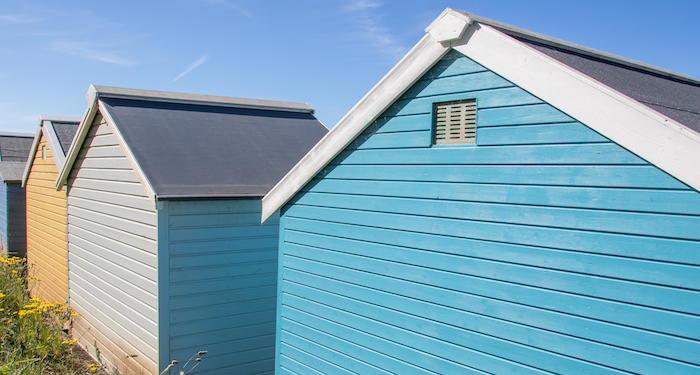
This is similar to the roof on most houses and allows the water to run off the roof in two directions. These sheds are often larger than pent sheds and so provide more storage space.
Reverse Apex Shed
A reverse apex shed is the same design as a typical apex shed. However, the roof is reversed. On a reverse apex shed, the two sloping sides meet down the middle along the length of the shed, as opposed to the width of the shed.
This means that the slopes are down towards the front and back of the shed rather than on either side. This is similar to the roof on most houses and allows the water to run off the roof in two directions. These sheds are often larger than pent sheds and so provide more storage space.
Potting Shed
A potting shed is a type of shed that is used for potting plants and vegetables in addition to storing outdoor equipment and tools. Potting sheds are often compared to greenhouses. They feature a large sloping window made of thin glass or plastic that slows heat and light to travel into the shed.
Warmer temperatures inside the shed will help to encourage vegetable and plant growth while also protecting the young plants from weather damage. You can use the other sides of the potting shed for storage, and the wooden walls may feature things such as hooks or shelves.
Shiplap Shed
A shiplap shed can be identified by its shiplap cladding. Shiplap cladding is similar in its appearance to tongue and groove sheds that feature interlocking timber boards.
However, this type of cladding features a recess cut into the edge of each wooden board, allowing them to overlap slightly.
The cladding on the shed will mean your shed is protected all year round from all weather conditions. It also ensures rainwater can run off it effectively whilst also offering a secure, reliable, and durable storage solution.
Overlap Shed
An overlap shed is one that has overlapping timber boards. Overlap sheds are mostly considered to be the easiest and the cheapest type of shed to construct compared to shiplap sheds and tongue and groove sheds.
The overlapping timber boards allow rainwater to run off it easily while also allowing the boards to expand and contract as a result of weathering without any warping occurring.
Corner Shed
Corner sheds are sheds that have been designed to maximise the corner space in your garden. It is designed and manufactured to sit directly in the corner of your garden.
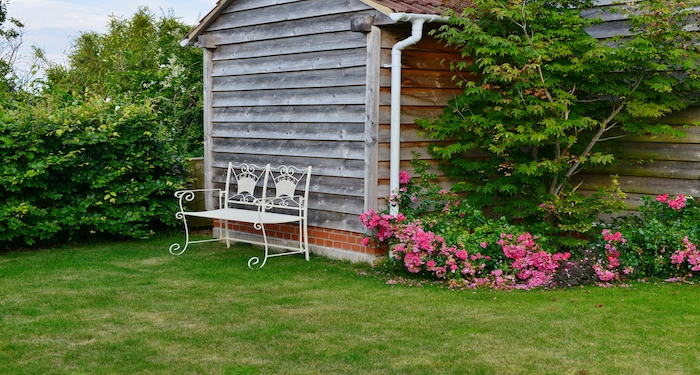
It features a wide front for easy access and is a great way to optimise the corner of your garden without losing too much of your outdoor space.
FAQs
Q: Should you remove a shed with asbestos?
A: Asbestos is very dangerous if inhaled, and it can cause some serious diseases such as lung scarring, cancer, and other types of lung damage. This occurs whenever asbestos is tampered with, and the tiny fibres are released into the air.
Due to this, it's important to hire an expert to take care of your shed removal for you as this is the safest option.
Q: Can I sell an old shed?
A: If your shed is in good condition, you may not have to demolish the shed at all. You may be able to sell it, providing someone has the means to transport the shed from your property to the buyer's property.
In most cases, you will have to dismantle the shed if you want to sell it to make it easier to transport.
Q: Can I remove a shed myself?
A: It is possible to complete a shed removal as a DIY job. However, it is not at all easy. Shed materials can be heavy and large, so it would be a difficult job for anyone who isn't physically strong.
Plus, the garden shed removal could be extremely dangerous if asbestos is present somewhere in it, such as in the roof. Even if you do manage to dismantle the shed yourself, you'll be left with a large pile of materials to dispose of.
Q: What type of garden shed lasts the longest?
A: A high-quality shed that is constructed of metal is probably the best option if you are looking for a shed that lasts for a long time.
Q: How big can a new shed be without planning permission?
A: If you want to avoid planning permission, a shed needs to be just one storey high with the eave height no greater than two and a half metres for a flat roof, four metres for a dual pitched roof, and three metres for any other type of shed roof.
Q: How can I secure a shed?
A: There are many different ways to secure a shed, including improving and upgrading the lock and replacing the door hinge. You could also much further improve the security of your shed by adding an alarm system to it.

